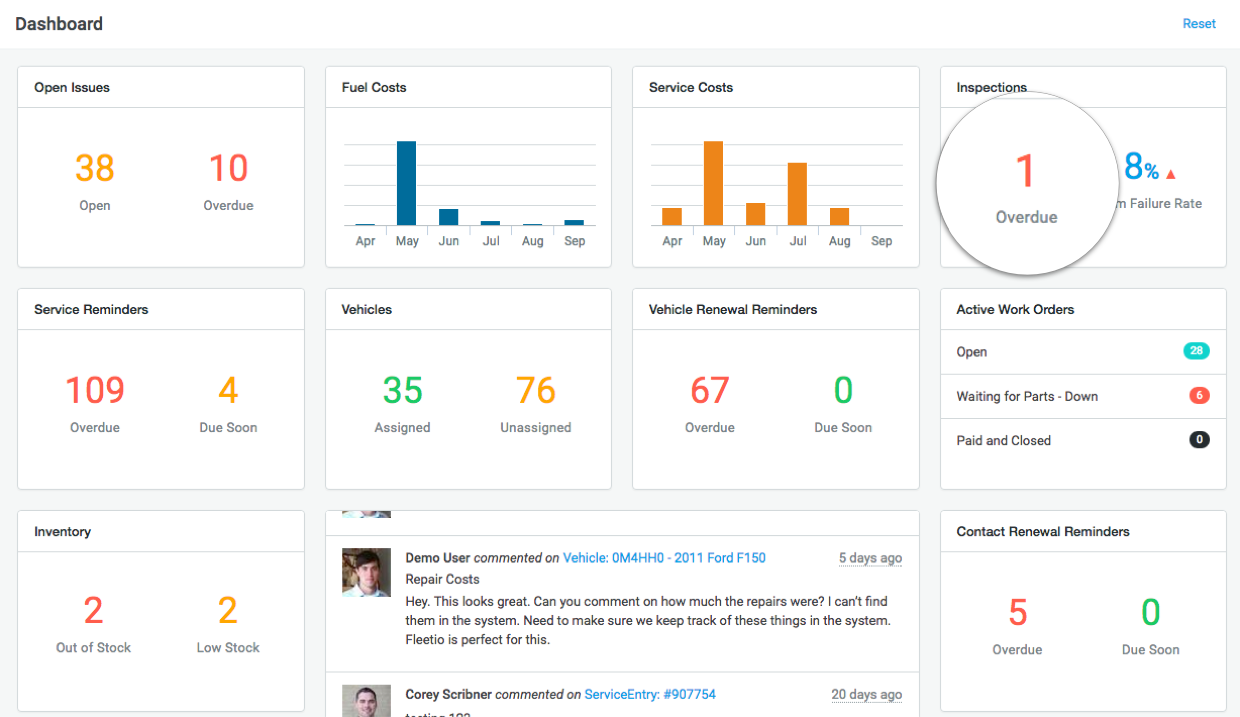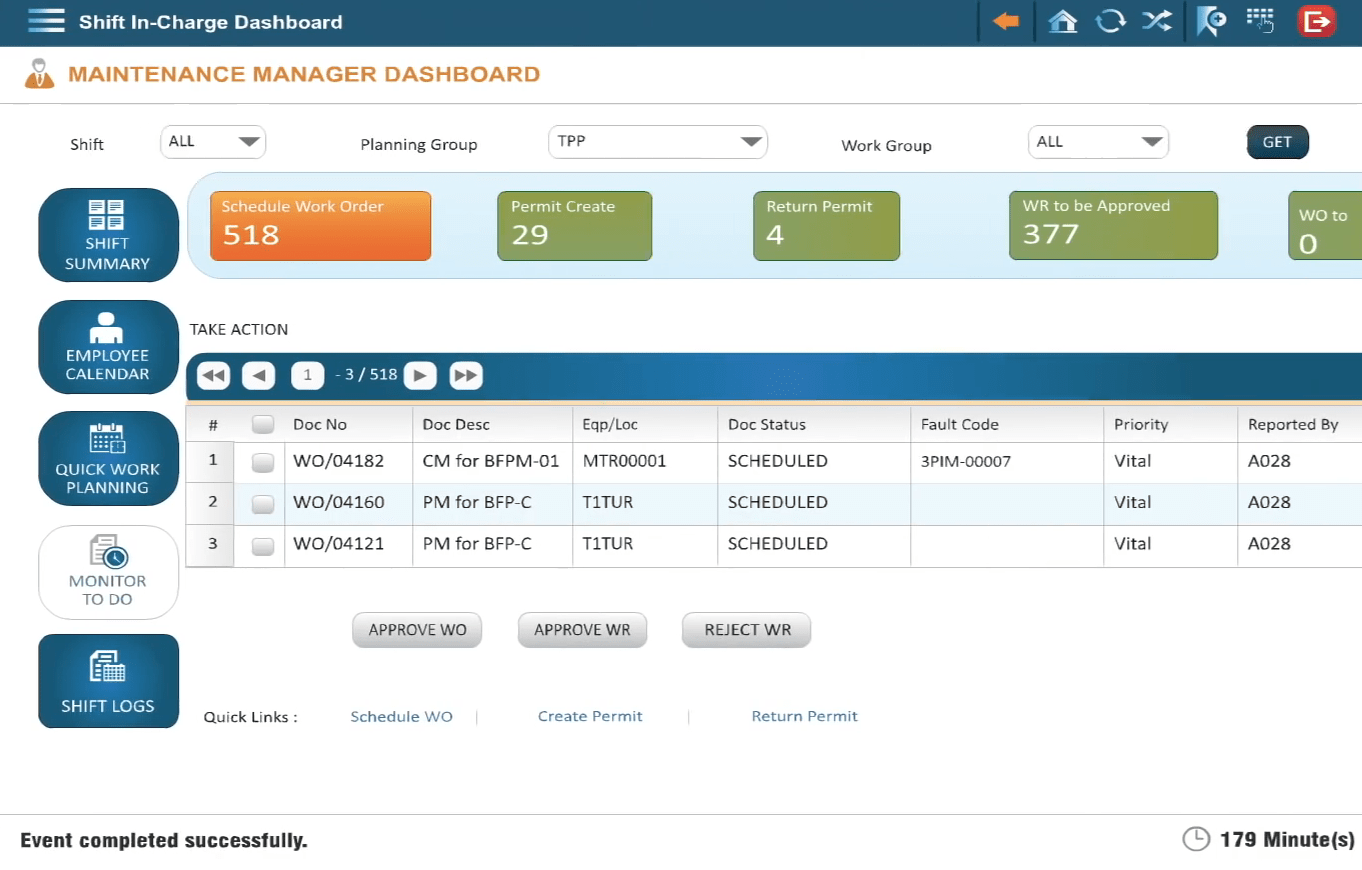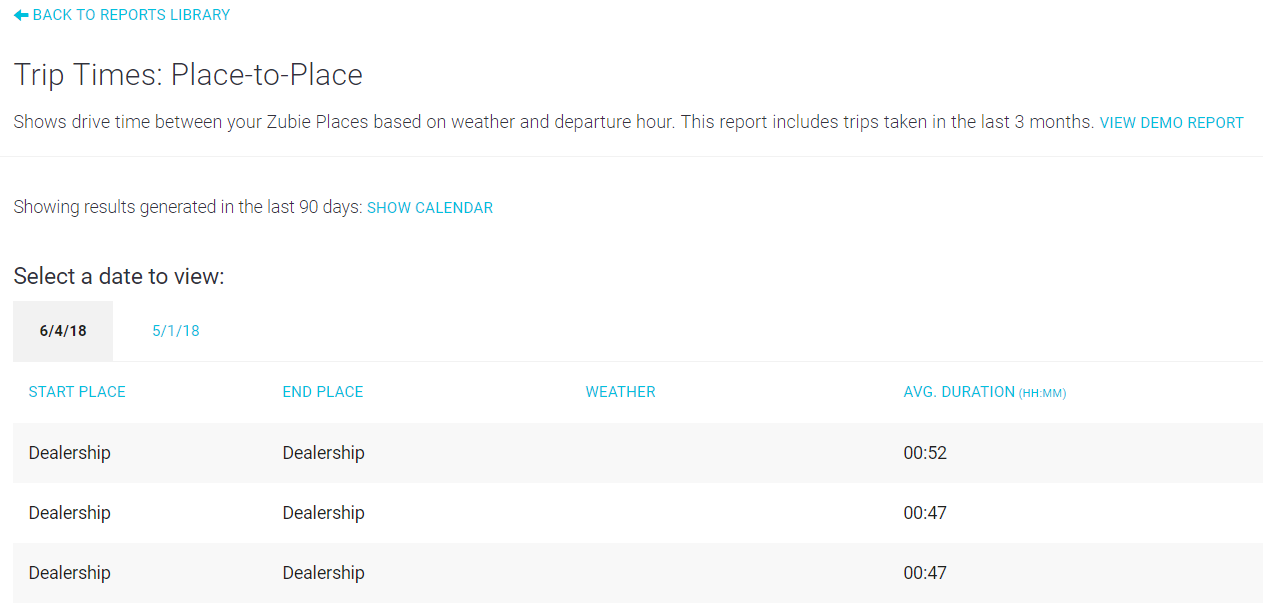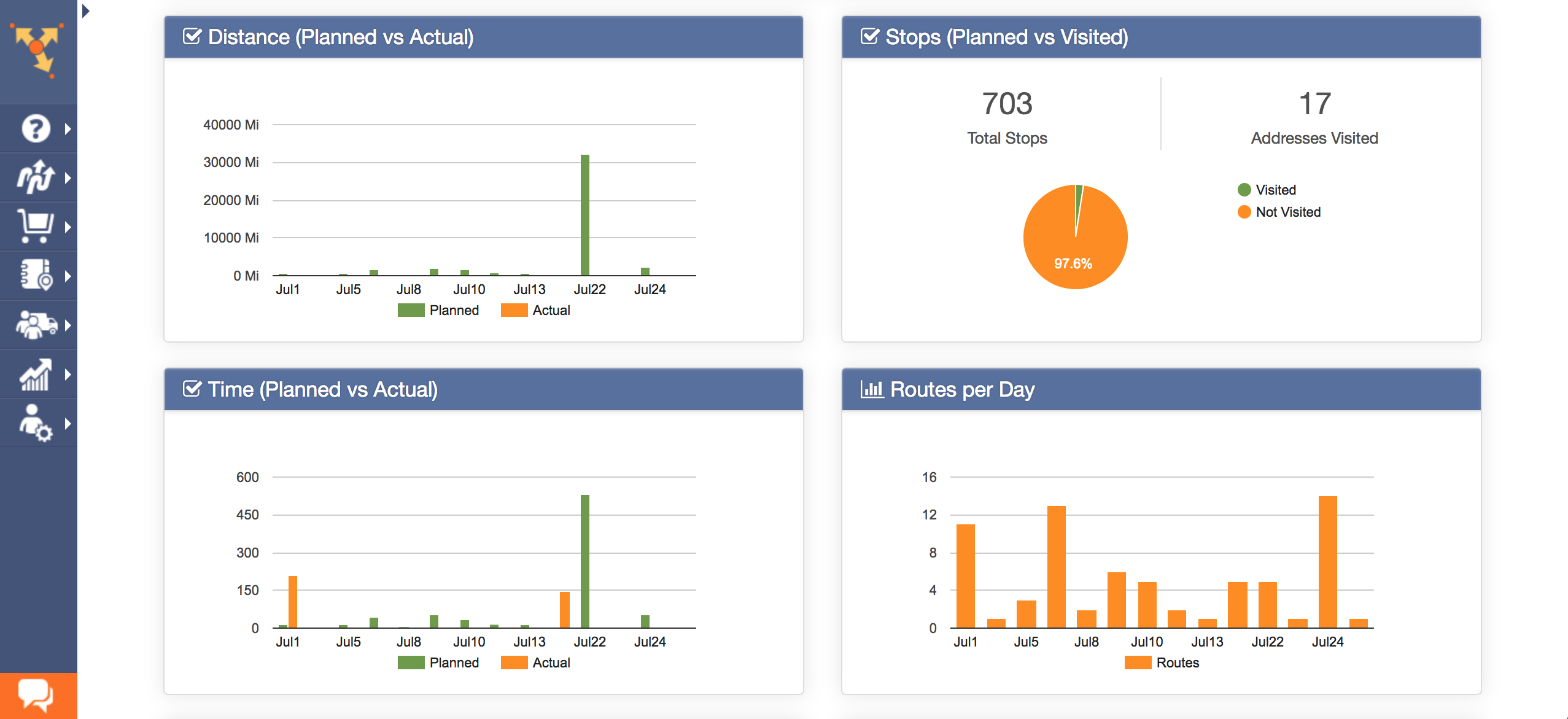Managing a fleet, big or small, means wearing multiple hats. You’ve to handle a wide range of tasks — from trivial admin tasks to repetitive processes— that reduce the amount of time you spend on more critical revenue-generating activities. Besides, you have to address increasing fuel and vehicle maintenance costs to minimize their impact on profitability.
Combined, these tasks and factors can be too difficult to handle manually, even for a workaholic fleet manager. This is where fleet management software comes in. The platforms automate workflows, taking away the time-consuming tasks that add little to no value to your bottom line. Moreover, the solutions eliminate the risk of miscommunications, thus, allowing you to deliver exceptional customer service.
That said, you should have in-depth knowledge to pick the best fleet management software out of the jumbled pile. In this article, we’ll discuss all the basics of fleet management systems. We’ll delve into what this software is, its main features, benefits, and factors you should consider when buying one. In this way, after reading this guide, you’ll have all the information you need to pick the best solution for your business.
What is Fleet Management Software?
Put simply; a fleet management software is a computer system that enables companies to manage, organize, and coordinate every aspect of fleet operation. It’s an application that automates fleet operations to reduce costs, improve performance, and enforce compliance and government regulations.
Businesses from a wide range of industries use fleet management software for dispatching and scheduling, route planning, fleet maintenance, cargo optimization, and more. The program is used in industries, such as trucking, construction, field services, oil and gas, utilities, mining, passenger transits, and local delivery.
List of Best Fleet Management Software
- Fleetio: A robust fleet maintenance software designed to manage fleets of all sizes. The platform enables companies to track, analyze, and enhance their fleet operations. It offers multiple notable features, which include work order management, service history tracking, mobile asset management, fuel management, issue management, contact management, vehicle assignment, and parts and inventory management. Fleetio offers simple, scalable pricing that’s suitable for all business sizes. The pricing starts at $5 per asset per month, billed annually. The vendor also offers a 14-day free trial where you can tinker with Fleetio features at no cost.
- Ramco Logistics Software: A robust, cloud-based solution designed to cater to the needs of freight forwarders, third-party logistics, and courier services. One of the notable modules of this comprehensive system is fleet and asset management, which provides tools that support the entire in-house fleet management operations. Primarily, Ramco Logistics Software enables companies to manage operations in the assets lifecycle. You can track asset/vehicle conditions, accomplish repairs, plan maintenance sessions, monitor asset availability, and create maintenance budgets. The pricing is not available to the general public, so contact the vendor for a comprehensive price quote.
- AUTOSIST Fleet: A simple yet powerful fleet management software built to cater to the needs of different fleet types and sizes. It offers streamlined fleet management and maintenance through notifications, thus, allowing companies to reduce costs. Besides, the platform centralizes data with mobile apps that sync seamlessly with the web portal. This way, companies can access vital fleet information anytime, anywhere. AUTOSIST Fleet also allows you to take pictures of receipts and other vital details right from a mobile device. In doing so, it helps you cut the paper process and eliminate clutter in your office. For pricing, the AUTOSIST Fleet packages are not available to the general public, so be sure to get in touch with the vendor for complete pricing information.
- Route4Me: A reliable route planning solution designed for every business with a mobile workforce. It’s an easy-to-use solution that automates route planning, enabling companies to create optimized routes in seconds. Primarily, businesses in food delivery, cable and telecom, distribution, construction and heavy equipment, and public safety use this solution to streamline their fleet management operations. While it ranks as one of the best route planning software, Route4Me is also apt for companies that care about their drivers’ locations during the business day. The software pricing changes based on the specific functions your business needs. For example, the pricing for the Dynamic Routing module starts at $149/month, whereas that of the Territory Management module starts at $99/month.
- Loqqat: By deploying Loqqat, transport providers can streamline their bus transportation management system and maximize the efficiency of their entire operation. Its fleet management app also acts as a value addition, as using this platform can give them an edge over competitors when it comes to complete safety and security provided to travelers. All the vehicles running trips can be tracked and monitored from a single location, i.e., the admin dashboard. With its bus tracking app, the details of each trip can also be viewed separately from the dashboard.
- Locus MotionTrack: An intuitive fleet tracking system designed for medium and large enterprises in industries such as ecommerce, home service, 3PL, and retail. The platform enables companies to monitor, track, and optimize their fleet with granular insights on each operation. Locus MotionTrack features include real-time ETAs, alerts and insights, interactive dashboards, en route analytics, GPS tracking, and inventory management. Also, the solution supports secure and easy sharing of real-time reports and insights. In case you’re interested, Locus MotionTrack is available by quote. Contact the vendor for more information.
- Avrios: A comprehensive fleet management software that enables companies to gain full visibility over fleet assets and mobile workforce. The platform collates all information about your fleet in an easy-to-use platform, putting the relevant details at your fingertips. In addition, it provides powerful features and automation for admin tasks to simplify the life of fleet managers. Some of its notable features include vehicle orders, mobility cost counters, mileage readings, vehicle procurement, omni-search function, vehicle life data archiving, and damage management. The Avrios pricing isn’t available to the general public, so contact the vendor for comprehensive pricing information.
- Chevin FleetWave: A reliable fleet management solution that provides a solid set of tools to help you understand your fleet to improve operational efficiency. The platform enables you to manage your fleet, small or large, and the mobile workforce from a single location. It provides all relevant information, such as utilization, maintenance, fuel costs, operating expenses, and accident history. Some of the notable FleetWave features include vehicle, assets, and equipment management, maintenance and repair, driver management, and fuel cost management. Chevin FleetWave pricing is available upon request. Contact the vendor for in-depth details about product pricing.
- Lytx DriveCam Enterprise: An end-to-end fleet management software that boasts an advanced vehicle tracking functionality. The platform provides project management features, which help companies to delegate and monitor driver tasks. Primarily, it makes it easy to monitor the mobile workforce and pinpoint cases of bad driving behavior. This way, it helps the fleet manager to identify potential problems and solve them more proactively. Some of its main features include driver data capture, monitor driver performance, in-cab technology, self-coaching, online portal, and predictive analytics. The Lytx DriveCam Enterprise pricing is only available upon request. Contact the vendor for a detailed price quote.
- Zubie: A fleet management software designed for businesses with vans, light trucks, and cars. The solution connects fleet assets, drivers, and businesses, keeping everything in perfect sync to improve operational efficiency. One thing you’ll like about this platform is that it’s incredibly detailed with robust features, buts it’s pretty easy to use. Some of its main features include driver performance, 24/7 GPS tracking, driver check-in, and vehicle health and maintenance. Zubie pricing starts from $14/month up to $22/month. Higher price plans come with more advanced features.
- Onfleet: An innovative fleet management software that sports a modern user interface and impressive reporting features. Primarily, is built with retailers, distributors, multinational couriers, and on-demand delivery startups in mind. It’s geared towards the mobile workforce with decent features to streamline delivery management and scale operations efficiently. Some of its notable features include route optimization, auto dispatch, effortless onboarding, proof of delivery, driver chat, predictive ETAs, feedback collection, real-time driver tracking, and comprehensive reports. Onfleet pricing starts from $149/month up to $1999/month.
How Does Fleet Management Software Work?
Primarily, fleet management software entails two vital components, namely online database information systems, and GPS tracking or telematics devices. Typically, the telematics gathers data, such as a vehicle’s GPS location, speed, distance traveled, fuel usage, fault codes, harsh braking, idling, and bearing.
The data is then sent to the online database software through a cellular connection. Finally, the online database organizes the information into reports to aid mobile workforce management and vehicle tracking.
Even better, modern fleet management software comes with tailor-made mobile apps. The apps collate data from the telematics via USB, Bluetooth, or cellular connections. These also provide instant insights to help drivers improve efficiency and productivity.
Key Features of Fleet Management Software
Here are the key features of the fleet management software:
GPS tracking
Inarguably, this is one of the most important features of fleet management software. GPS tracking enables you to track the location of drivers, vehicles, and other assets in your fleet. With real-time GPS tracking, you can easily assign the nearest driver available to urgent customer delivery. Also, it’s easy to pinpoint vehicle misuse and get the truth when a customer dispute arises.
Vehicle and asset utilization
Vehicle fuel and other fleet assets form one of your biggest expenses. However, with fleet management software, you can cut their impact. The solution allows you to find the most cost-efficient way to run your fleet. It enables you to pinpoint underutilized assets and fuel wastage so you can take the necessary steps.
Vehicle diagnostics
Vehicle breakdown can be the Achilles’ heel of your business. When it strikes, it disrupts your operations and prevents timely deliveries, leading to customer dissatisfaction and loss of money.
Fortunately, modern fleet management solutions offer a vehicle diagnostic function. With this function, you can continuously monitor every vehicle in your fleet for fault codes. These are displayed in actionable reports, which put you a step ahead of every breakdown. As a result, you can pinpoint critical issues in real-time and proactively plan maintenance.
Driver communication
When managing a fleet of two or three vehicles, its easy to remain in constant communication with the drivers. However, with a fleet of a hundred or a thousand, communication can be the real detrimental flaw in your fleet management efforts. Even worse, when information is passed via combinations of calls, text, and email, the key details can easily slip through the cracks.
Fortunately, with fleet management software, you can create a centralized record for all company communication. Besides, the platform allows you to deliver company announcements through instant messaging. For example, when you find the next available driver for a delivery task, you can send the detailed instruction to them in a few clicks.
Dashboard driver scorecards
Even better, fleet management software allows you to view driver scorecards. The scorecards provide a “safety score” to each of your drivers. This way, you can easily identify the most reckless driver(s) in your team. Moreover, some advanced solutions provide details, such as lane cutoffs and tailgating for fast analysis.
With these details, You can quickly review issues to reveal if your driver is to blame for accidents or untimely deliveries. Ultimately, driver scorecards help you prevent accidents and protect your businesses from liability.
Other notable features
- Facility insights
- Geofencing
- Compliance
- Alerts and notifications
Benefits of Fleet Management Software
There is no doubt, companies that use robust fleet management software reap a host of benefits, which include:
- Prevention of delivery delays
- Increased control over vehicles and flexible workforce
- Curbed unauthorized use of company vehicles
- Improved driving habits and reduce accidents
- Minimized accidents and reduced maintenance and insurance costs
- Reduced time spent on predicting departure and arrival times
- More efficient fuel consumption
- Improved security of company vehicles and assets, and faster recovery of lost assets and vehicles
- Increased vehicle availability and labor productivity
- Better customer satisfaction
- Improved regulatory compliance
- Extended vehicle life
Factors to Consider When Buying Fleet Management Software
There is a plethora of fleet management software on the market. As such, you’ve to come up with a predefined formula to pick the ideal solution. Here are some of the key factors to consider when buying a fleet management system:
- Your needs and budget. Understanding your business needs is the first and most important factor when picking a fleet management software. Besides, you should put a budget ceiling and prioritize getting a solution that will offer the relevant features within the stipulated limit.
- Value beyond GPS tracking. Traditionally, fleet management was all about vehicle tracking, but this is not the case anymore. Make no mistake; vehicle tracking is still an important function for your company. However, to get real value from a fleet management software, you need more than GPS tracking. Look for a solution that offers multiple complementary features, such as driver communication, vehicle diagnostic, dash cams, and more.
- Support. When it comes to vehicle management, you don’t need just the product; you need a partner. This means that the software vendor should be available to lend a hand when you run into trouble with the system. Ideally, the software vendor should offer 24/7/365 support via the most popular channels, such as phone and live chat.
- Integrations. Besides, the fleet management system should work seamlessly with most of the business applications and technologies you use. Preferably, the platform should offer an API functionality.
- Value for money. Moreover, research rigorously about software pricing. Avoid products that come with hidden costs as these will weigh down on your operational costs later on.
Potential Fleet Management Problems
There are multiple benefits to implementing fleet management software, such as increased cost savings, regular maintenance schedules, and proper asset utilization. However, even with these benefits in the offing, you will encounter some issues once you install the system. Some of the potential issues include:
Time limitations
As you’ll notice, installing a fleet management software is the first giant leap towards streamlining fleet operations. However, it takes numerous hours of monitoring for the system to deliver the desired results.
Besides, like other tech solutions, it reduces the amount of manpower needed. However, it doesn’t eliminate the manual effort completely. Many fleet managers ignore this fact. Hence, once they install the system, they leave it to run unmonitored.
Don’t make this mistake. Otherwise, you’ll not reap the benefits of using fleet management software. Along with picking the right solution for your business, you must plan and put in place proper monitoring schedules and reports creation plan.
Employee acceptance
Generally, employees can develop an inherent dislike for managers that constantly watch them while at work. Vehicles fitted with GPS trackers may feel like an office that’s watched all around by numerous cameras or bossy managers. This may prevent drivers from performing to the best of their ability.
To block the negative impact of GPS trackers, educate drivers, and the mobile workforce about the merits of having GPS trackers. Come clean about the motive behind the installation and invest a significant amount of time and effort to make employees buy your idea. Some of the agenda to put across include getting support during emergency cases, preventing lengthy visits to garages, and minimizing maintenance costs.
Technical glitches
Moreover, like every other technological innovation, fleet management software aren’t immune to technical issues. At times, the tracking devices might fail to pinpoint the exact location of a vehicle as a result of technical issues. These can range from minor problems like poor internet connections to major issues, such as battery problems.
Latest Trends in Fleet Management
Like every sector of the economy, the fleet industry is driven by a wave of steady digital transformations. Every forward-thinking business should remain abreast of the innovations in this industry to unlock its potential and reap optimal benefits. Here are some of the trends that are driving the fleet industry:
Automated vehicles (AVs)
Envisioned as an error defining technology, autonomous driving is slowly becoming a reality. AVs innovation has been tested in different parts of the world, and its commercial release, which felt long overdue, is just around the corner.
The technology holds an outsized potential in simplifying the roles of fleet managers thanks to its superior capabilities to analyze and manage data. Besides, with Artificial Intelligence (AI) coming into the picture, AVs will feature improved tracking and forecast maintenance capabilities.
Moreover, the prospect of having vehicles that can automatically drive themselves to a repair is too mesmerizing to behold. Not just that, the use of AI means that companies can configure AVs to select the most efficient routes and evade gridlocks for faster deliveries.
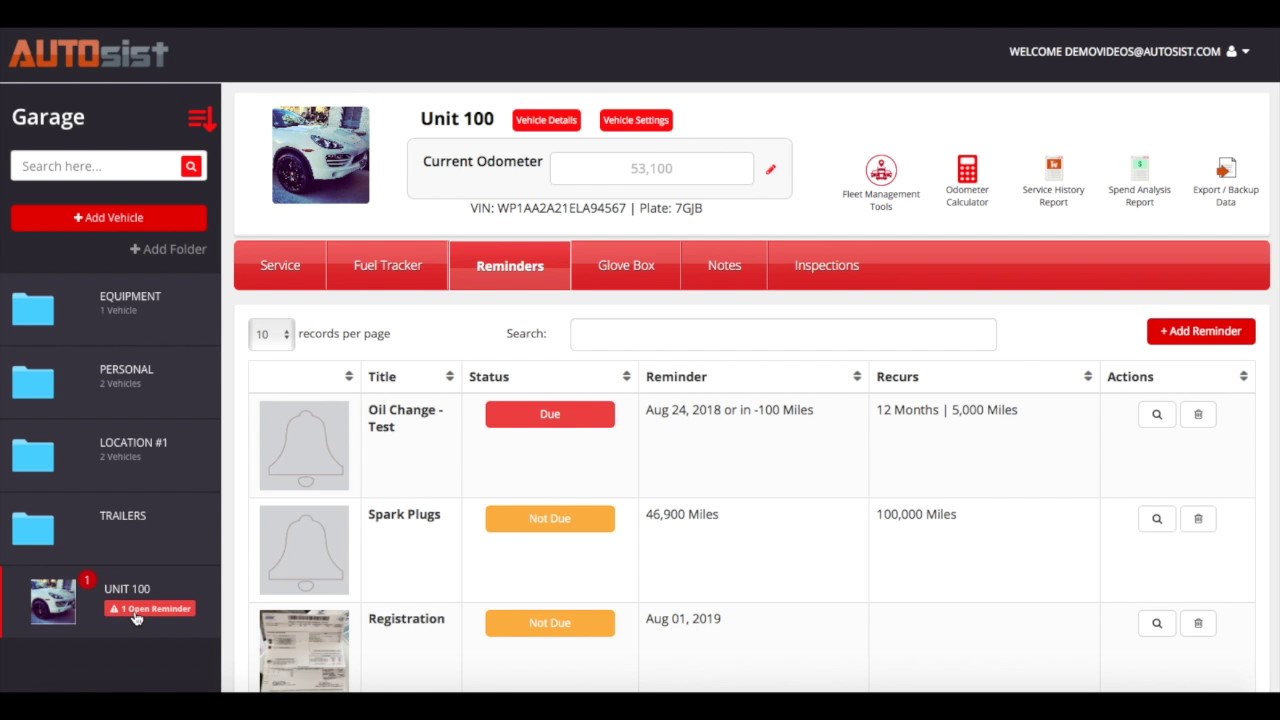
AUTOSIST Fleet enables companies to handle the management and maintenance of their fleet from a single dashboard
The connected car
In the modern era, vehicles that utilize wireless data sharing to perform and enhance different functions have become a familiar sight. In fact, according to a study by Statista, connected vehicles are poised to have 100% penetration by 2026.
The proliferation of connected cars makes fleet management highly responsive. Consequently, it improves efficiency and boosts productivity with the capability to identify vehicle status, availability, and location anytime, anywhere.
Mobility as a Service (MaaS)
Thanks to the advent and growth of ride-sharing services like Uber and Lyft, the number of personally owned cars is dropping. As this happens, transportation is slowly becoming an on-demand service for individuals and companies alike.
This has resulted in the birth of the concept of Mobility-as-a-Service (MaaS), which is changing the way fleets are managed. Today, all companies, including those with their own fleets, are relying heavily on car sharing to quell the growing need for proper transportation.
Ultimately, mobility management is gathering pace. This is because companies are no longer interested in overseeing vehicle usage only. They want to provide unique options that inspire employees to select the most efficient and sustainable means of transportation.
How Do You Implement Fleet Management Software?
There you have it, a compilation of all the basic details about fleet management software. With this information, it should be a piece of cake to find the best solution for your business. However, adopting a fleet management system isn’t the complete solution to the jigsaw puzzle. The implementation also includes multiple organizational changes, such as training time, policies, and requires a well-constituted workforce to execute it properly. Besides, to get the best out of the fleet management software, you need to take into account not only organizational culture but, most importantly, the changing dynamics of the landscape.

